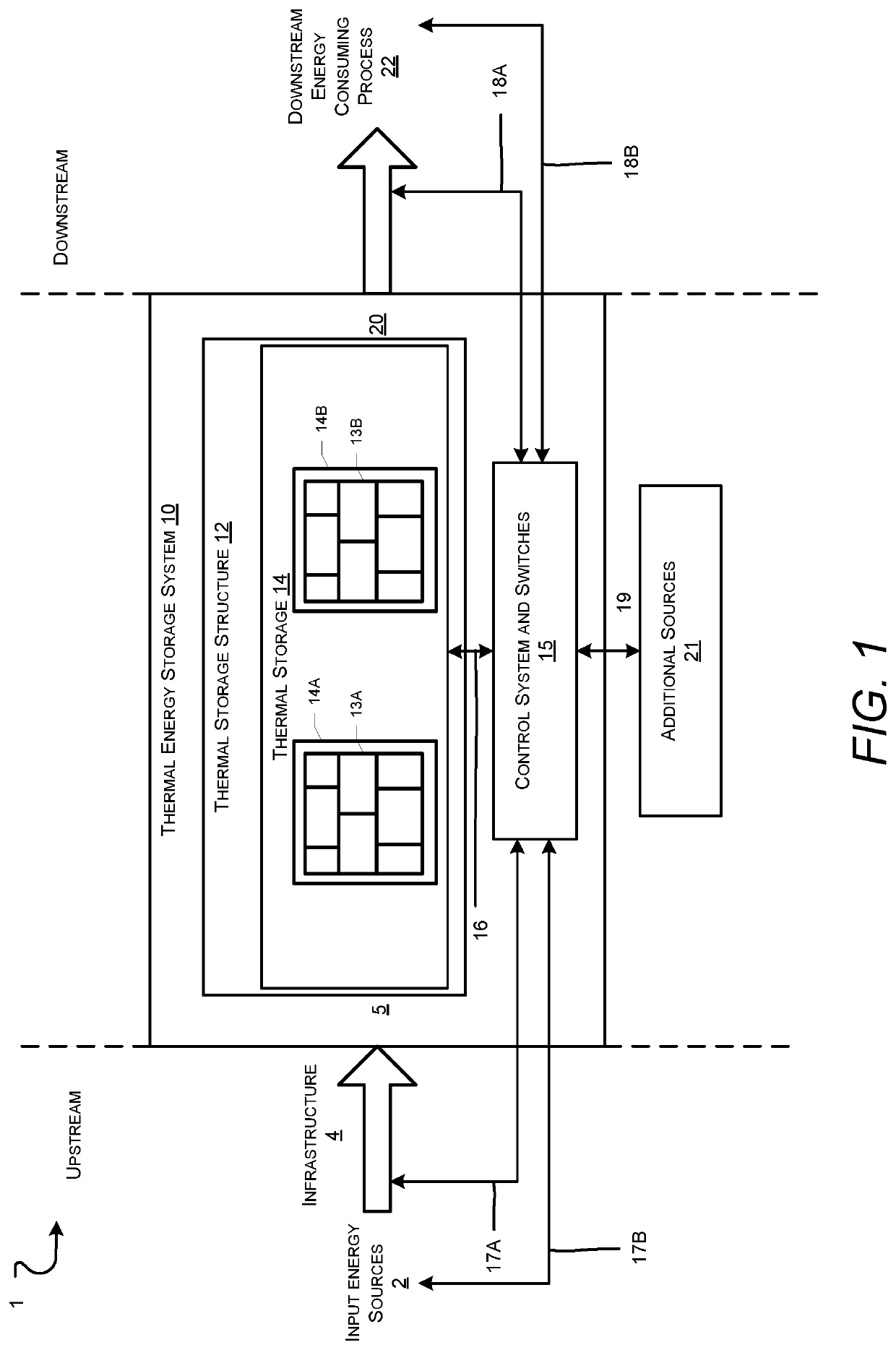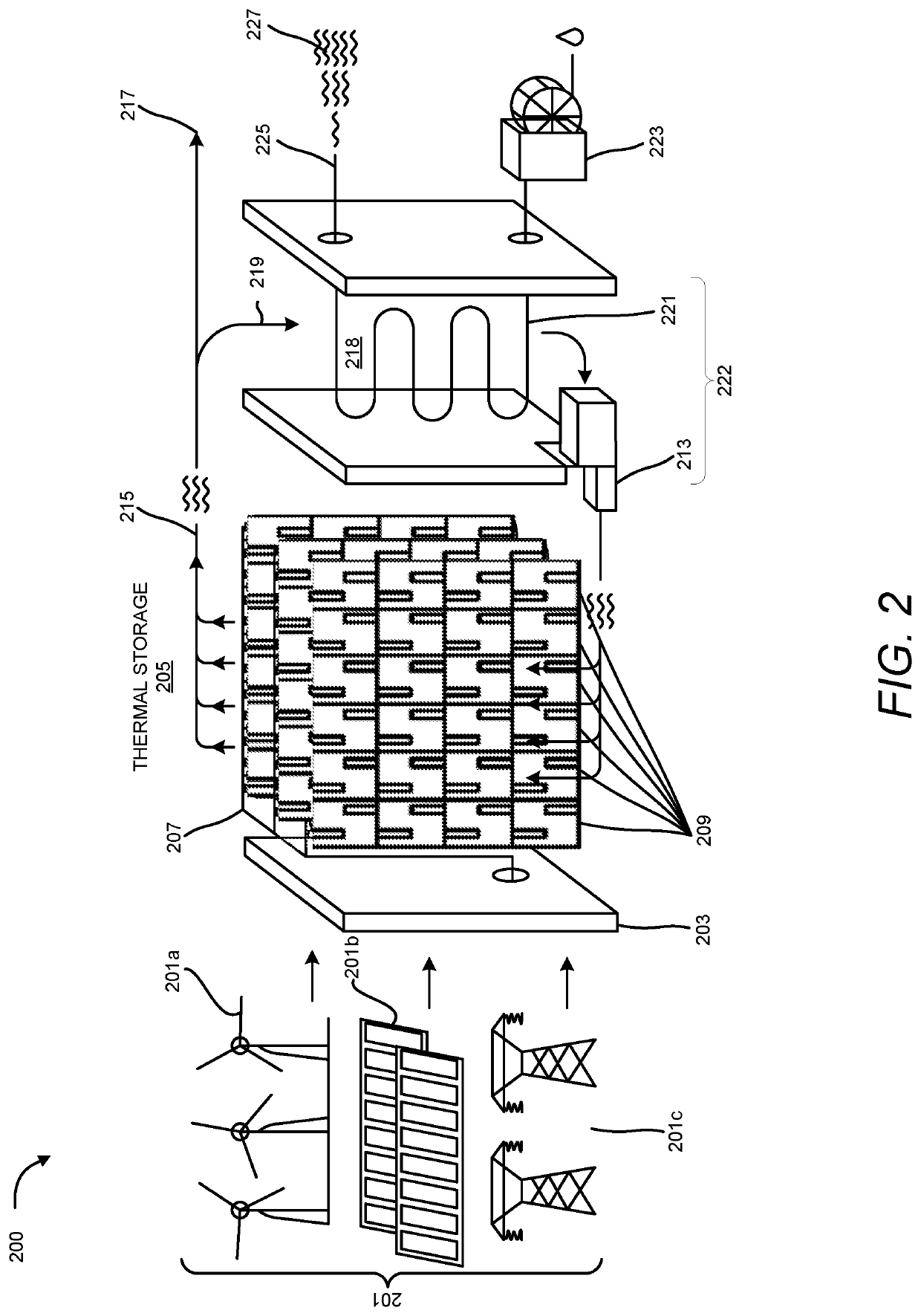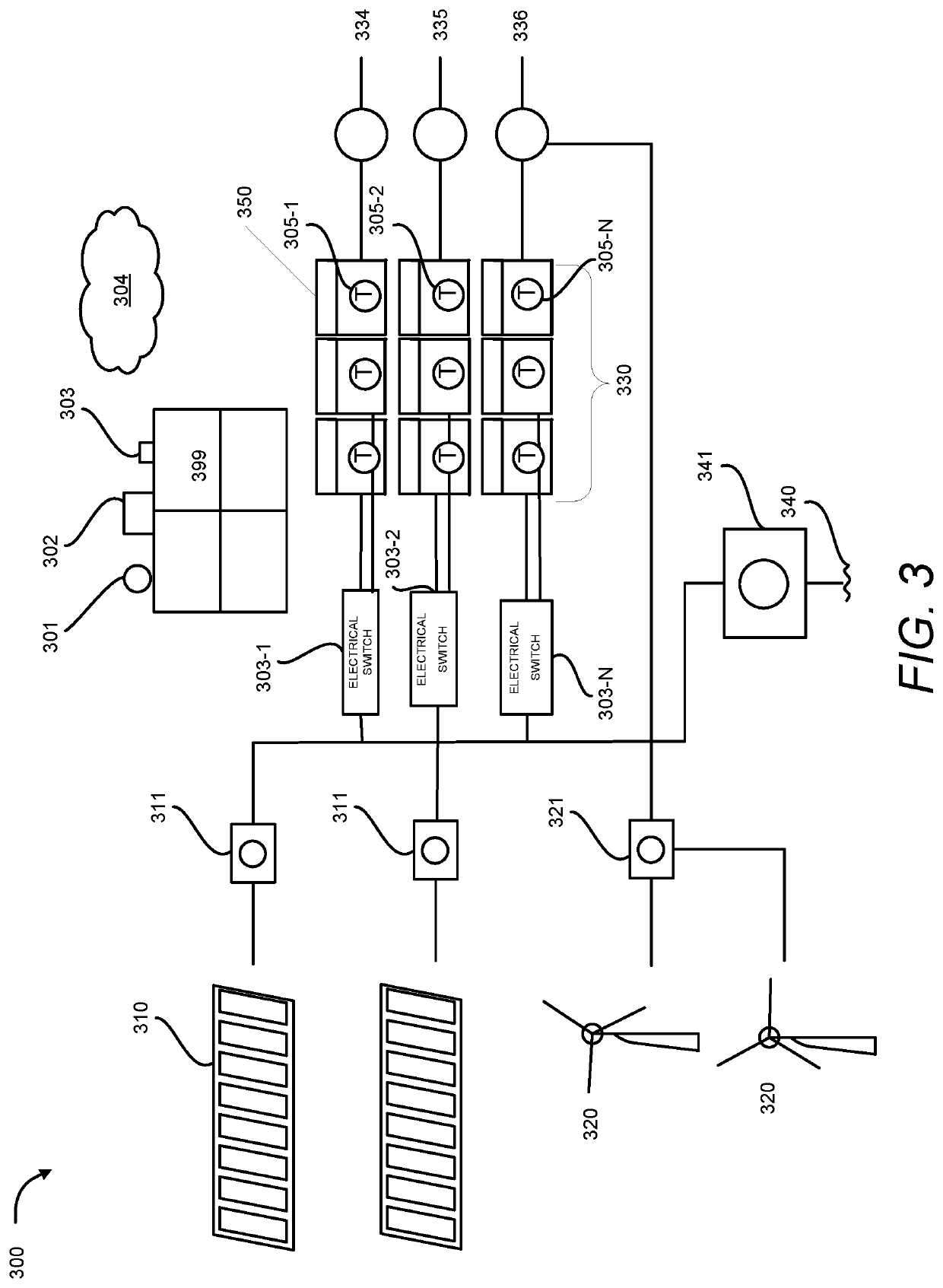But a major challenge relating to the use of VRE is, as its name suggests, its variability.
The variable and intermittent nature of wind and
solar power does not make these types of energy sources natural candidates to supply the continuous energy demands of electrical grids, industrial processes, etc.
The high cost of this form of energy, however, has limited its wide adoption.
These financial barriers
pose hurdles to the wider use of electrochemical storage of energy.
Thermal storage materials are limited in their
usable temperatures by factors such as freezing, boiling, or thermally driven
decomposition or deterioration, including chemical and mechanical effects.
On the other hand, the conversion of lower-temperature heat to higher temperatures is intrinsically costly and inefficient.
Accordingly, a challenge in
thermal energy storage devices is the cost-effective delivery of
thermal energy with heat content and at a temperature sufficient to meet a given application.
Thermal energy storage systems generally have costs that are primarily related to their
total energy storage capacity (how many MWh of energy are contained within the
system) and to their
energy transfer rates (the MW of instantaneous power flowing into or out of the
energy storage unit at any given moment).
The rate of
heat transfer into and out of storage media is limited by factors including the heat
conductivity and capacity of the media, the surface area across which heat is transferring, and the
temperature difference across that surface area.
But each of these factors can add significant cost to an
energy storage device.
For example, larger heat exchange surfaces commonly require 1) larger volumes of
heat transfer fluids, and 2) larger surface areas in heat exchangers, both of which are often costly.
Higher temperature differences require heat sources operating at relatively higher temperatures, which may cause efficiency losses (e.g.
radiation or conductive cooling to the environment, or lower
coefficient of performance in heat pumps) and cost increases (such as the selection and use of materials that are durable at higher temperatures).
Another challenge of systems storing energy from VRE sources relates to rates of charging.
However, in this approach, the flow of
heat transfer fluid, relative temperatures, material surface areas, and
heat transfer fluid heaters must all be sufficient to absorb peak incoming energy, and which increases costs over components that do not require such high capacity.
The necessity for a
convective heating system, including a blower system (e.g., a turbo blower system) or the like, adds further cost.
Additionally, the
solid medium is not able to be heated and cooled in a uniform
thermocline manner, since both the material and internal fluid paths are randomly or nonuniformly arranged, and
buoyancy effects result in temperature gradients transverse to the desired gradient.
This causes outlet temperatures to rise relatively early during charging, necessitating more expensive air ducts and fans that can
handle high temperature fluids; and further causes outlet temperatures to fall relatively early in discharging, limiting the practically achievable delivery temperature to levels significantly below the peak temperature of the storage medium (e.g. rock).
Because the applicability of stored heat varies significantly with temperature—many industrial processes have a minimum temperature required to drive the process at or above 1000°—and because the cost and
usable lifetime of electrical resistance heaters varies sharply with temperature, any thermal storage system that employs convective charging has significant disadvantages both in its cost and its field of use.
Finally, it is noted that the design disclosed in this reference uses
convective heat transfer, rather than
radiation of heat (and
reradiation of heat from
brick to
brick), as the primary method of heating, which is slower and less effective at achieving uniform heating.
Further, during operation of a system according to Siemens / ETES, like any system employing packed beds of loose / unstructured solids (whether rocks, gravel, manufactured spheres, or other shapes and methods), the storage media can be expected to expand and contract repeatedly, and repeatedly exert high forces during expansion on the outer container holding the media, and to settle during cooling and shrinking, causing the media and
rubble to settle and potentially be crushed into small fragments or
powder, diminishing their
heat capacity.
In addition, the expansion due to heating of bulk, unstructured material as in Siemens can be expected to exert stress on the container for the bulk material, and thus require the use of expensive insulation and container walls.
However, this approach does not recognize or resolve the problems and disadvantages, or provide enabling disclosure of the solutions necessary to enable such storage of VRE in solid media.
As discussed below, Stack's primary heating method disclosure has significant disadvantages versus the present inventions, as the proposed designs have high
vulnerability to even small nonuniformities in properties of heaters and bricks; high thermal gradients due to reliance on conductive heat transfer and nonuniform heating of surfaces; and high consequences of occurrences of
brick failures, including the well-known
cracking and spalling
modes.
Because the heater wires are exposed to a small amount of brick area and heat transfer is by conduction, nonuniformity in the heating of the
refractory material and potential thermal stress in that material may result, which would be exacerbated in case of failure of individual heater elements, and because internal
cracking changes conductive heat transfer, any cracked areas result in substantially higher surface temperatures near such cracks, which may result in significantly higher local temperatures of heating elements, causing either early-life heater temperatures or significant limits in the practical operating temperatures of such heaters, or both.
However, this teaches limiting the conductive and / or
radiative transfer of heat within different zones defined by the baffle structure.
However, this approach does not address the above problems and disadvantages with respect to the charging and discharging of the brick.
Problems and Disadvantages
Earlier systems do not take into account several critical phenomena in the design, construction, and operation of
thermal energy storage systems, and thus does not facilitate such systems being built and efficiently operated.
More specifically, current designs fail to address “
thermal runaway” and element failure due to non-uniformities in thermal energy charging and discharging across an array of solid materials, including the design of charging, discharging, and unit controls to attain and restore balances in temperature across large arrays of thermal
storage material.
Thermal energy storage systems with embedded radiative charging and convective discharging are in principle vulnerable to “
thermal runaway” or “heat runaway” effects.
The phenomenon may arise from imbalances, even small imbalances, in local heating by heating elements and in cooling by
heat transfer fluid flow.
The variations in heating rate and
cooling rate, unless managed and mitigated, may lead to runaway temperatures that cause failures of heaters and / or deterioration of
refractory materials.
Overheating causes early failures of heating elements and shortened system life.
As a result, the
failure rate for the wire is likely to be increased, reducing heater lifetime.
Thus, in successive heating and cooling cycles, progressively less local cooling can occur, resulting in still greater local overheating.
Previous systems do not adequately address problems associated with VRE energy sources, including variations arising from challenging
weather patterns such as storms, and longer-term supply variations arising from seasonal variations in VRE generation.
Current designs do not adequately provide
storage management that considers a variety of factors, including medium-term through short-term weather forecasts, VRE generation forecasts, and time-varying demand for energy, which may be determined in whole or in part by considerations such as industrial process demand, grid
energy demand, real-time
electricity prices, wholesale
electricity market capacity prices, utility resource adequacy value, and carbon intensity of displaced energy supplies.
 Login to View More
Login to View More 


